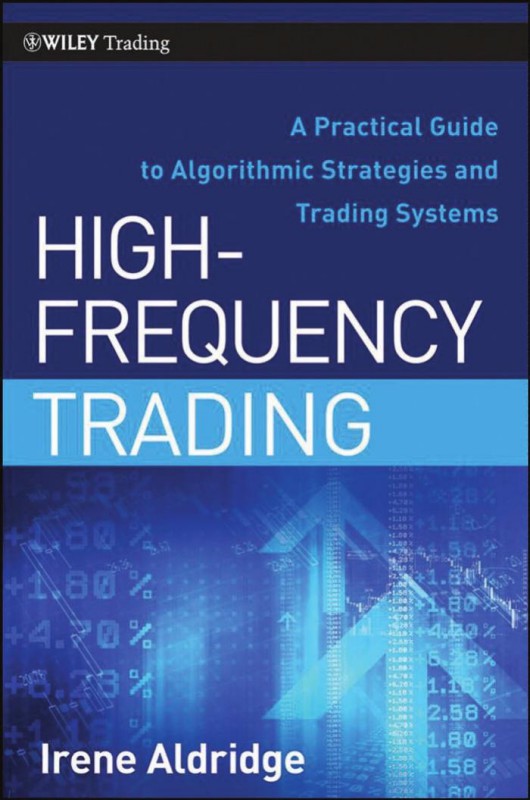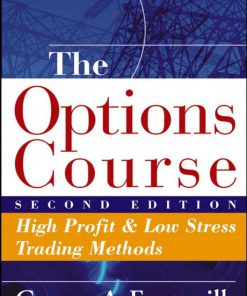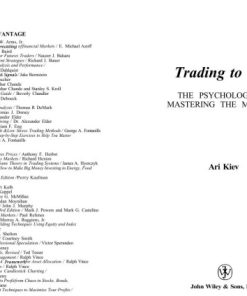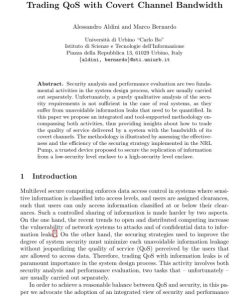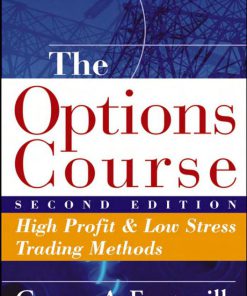High Frequency Trading A Practical Guide to Algorithmic Strategies and Trading Systems 1st Edition by Irene Aldridge ISBN 0470563761 9780470563762
$50.00 Original price was: $50.00.$25.00Current price is: $25.00.
Authors:Aldridge, Irene , Author sort:Aldridge, Irene , Languages:Languages:eng , Published:Published:Dec 2009
High Frequency Trading A Practical Guide to Algorithmic Strategies and Trading Systems 1st Edition by Irene Aldridge – Ebook PDF Instant Download/Delivery. 0470563761, 9780470563762
Full download High Frequency Trading A Practical Guide to Algorithmic Strategies and Trading Systems 1st Edition after payment
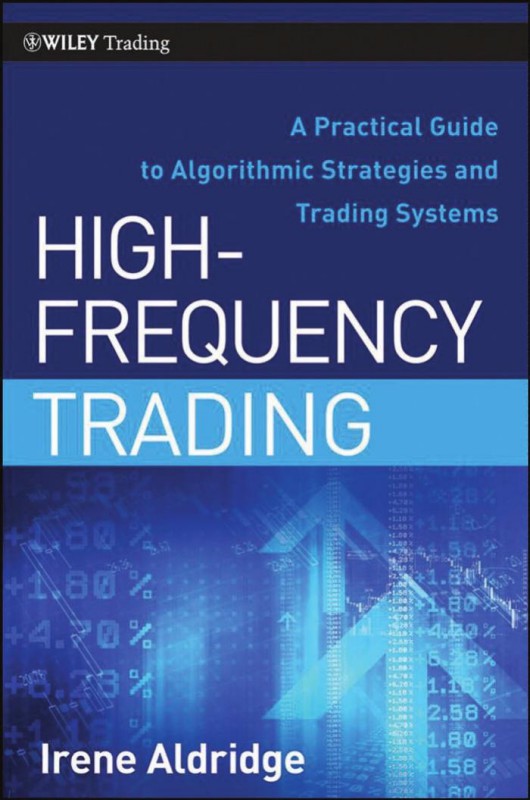
Product details:
ISBN 10: 0470563761
ISBN 13: 9780470563762
Author: Irene Aldridge
A hands-on guide to the fast and ever-changing world of high-frequency, algorithmic trading
Financial markets are undergoing rapid innovation due to the continuing proliferation of computer power and algorithms. These developments have created a new investment discipline called high-frequency trading.
This book covers all aspects of high-frequency trading, from the business case and formulation of ideas through the development of trading systems to application of capital and subsequent performance evaluation. It also includes numerous quantitative trading strategies, with market microstructure, event arbitrage, and deviations arbitrage discussed in great detail.
- Contains the tools and techniques needed for building a high-frequency trading system
- Details the post-trade analysis process, including key performance benchmarks and trade quality evaluation
- Written by well-known industry professional Irene Aldridge
Interest in high-frequency trading has exploded over the past year. This book has what you need to gain a better understanding of how it works and what it takes to apply this approach to your trading endeavors.
High Frequency Trading A Practical Guide to Algorithmic Strategies and Trading Systems 1st Table of contents:
-
Understanding Algorithmic Trading
2.1. Overview of Algorithmic Trading Strategies
2.2. Types of Algorithms Used in HFT
2.3. Mathematical Models and Techniques
2.4. Market Microstructure and its Impact on HFT
2.5. The Importance of Latency and Speed in Algorithmic Trading -
Key Strategies in High Frequency Trading
3.1. Market Making and Liquidity Provision
3.2. Statistical Arbitrage and Pairs Trading
3.3. Momentum and Trend Following Strategies
3.4. Event-Driven and News-Based Trading
3.5. Latency Arbitrage and Cross-Border Trading -
Building High Frequency Trading Systems
4.1. System Architecture for HFT
4.2. Hardware Requirements and Low Latency Optimization
4.3. Choosing the Right Programming Languages and Tools
4.4. Data Management and Real-Time Analytics
4.5. Connectivity and Market Data Feeds -
Risk Management in High Frequency Trading
5.1. Identifying and Mitigating Risks in HFT
5.2. Managing Market and Liquidity Risk
5.3. Algorithmic Risk: Flash Crashes and System Failures
5.4. Capital Allocation and Position Sizing
5.5. Compliance and Ethical Risk Management -
Backtesting and Simulation of HFT Strategies
6.1. The Importance of Backtesting in HFT
6.2. Building a Backtesting Framework
6.3. Historical Data and Simulations
6.4. Handling Overfitting and Bias in Backtesting
6.5. Evaluating Strategy Performance -
Optimization Techniques for HFT Algorithms
7.1. Enhancing Algorithm Efficiency
7.2. Latency Reduction and Throughput Maximization
7.3. Machine Learning and AI in Algorithmic Trading
7.4. Adaptive Algorithms and Real-Time Adjustments
7.5. Hardware Acceleration in HFT -
Market Data and Market Structure
8.1. Understanding Market Data Feeds
8.2. The Role of Exchanges and Dark Pools
8.3. Impact of Market Structure on HFT Strategies
8.4. Co-Location and Proximity Hosting
8.5. Regulatory Impact on Market Data Usage -
Performance Metrics and Evaluation
9.1. Key Performance Indicators (KPIs) for HFT
9.2. Measuring Latency and Throughput
9.3. Slippage and Transaction Costs
9.4. Analyzing Profitability and Sharpe Ratios
9.5. Stress Testing and System Stability -
Ethical Considerations and Market Impact
10.1. Ethical Issues in High Frequency Trading
10.2. The Role of HFT in Market Volatility
10.3. Regulatory Oversight and Market Fairness
10.4. Impact of HFT on Retail Investors
10.5. Future of High Frequency Trading -
Case Studies and Real-World Applications
11.1. Case Study 1: A Successful HFT Strategy
11.2. Case Study 2: The Flash Crash of 2010
11.3. Case Study 3: Risk Management Failures
11.4. Real-World Examples of HFT in Action
11.5. Lessons Learned from HFT Failures -
Future Trends in High Frequency Trading
12.1. Advances in AI and Machine Learning for HFT
12.2. Blockchain and Distributed Ledger Technology in Trading
12.3. The Impact of Quantum Computing on HFT
12.4. Evolution of Regulatory Frameworks
12.5. The Future of HFT: Opportunities and Challenges
People also search for High Frequency Trading A Practical Guide to Algorithmic Strategies and Trading Systems 1st:
-
algorithmic and high frequency trading
developing high frequency trading systems
is high frequency trading legal
how does high frequency trading work
high-frequency trading in a limit order book

